Scientist of the Day - Charles Darwin
Charles Darwin was buried in Westminster Abbey on Apr. 26, 1882. He had died on Apr. 19, 1882, at his home in Downe, south of London. It is rather curious how England's most famous agnostic ended up in Westminster Abbey. The Dean of Westminster, George Bradley, received a letter from William Spottiswoode, president of the Royal Society, requesting the Westminster burial. Bradley was then in France and unable to consult with anyone, and perhaps being unaware of Darwin's religious proclivities, he at once gave his assent. The funeral was attended by thousands—you needed a ticket (and mourning dress) to get in (second image), and Darwin had one of the most illustrious set of pallbearers the Victorian era had ever seen, including Alfred Russel Wallace, Thomas Henry Huxley, Joseph Hooker, John Lubbock, and even the American poet James Russell Lowell, who was serving as U.S. ambassador to Great Britain. The wood engraving of the funeral appeared the next day in The Graphic (first image).
Darwin was laid to rest right next to the remains of John Herschel, one of Darwin's philosophical heroes, and just a few feet from the grave of Isaac Newton. One of the images above shows the stones of both Darwin and Herschel in the Abbey floor (third image). The map (fourth image) will help you find Darwin’s tomb if you visit Westminster Abbey—Darwin’s memorial stone is no. 2, while Herschel’s is no. 1 (and Newton’s is no. 7). Later, Darwin’s family had a bronze relief portrait installed on the north (left) wall, near his grave (fifth image).
Darwin was the first and last naturalist to be interred in Westminster Abbey.
Dr. William B. Ashworth, Jr., Consultant for the History of Science, Linda Hall Library and Associate Professor, Department of History, University of Missouri-Kansas City. Comments or corrections are welcome; please direct to ashworthw@umkc.edu.

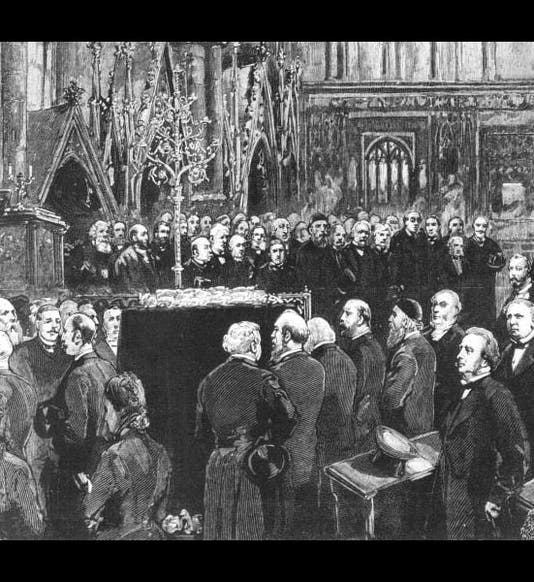
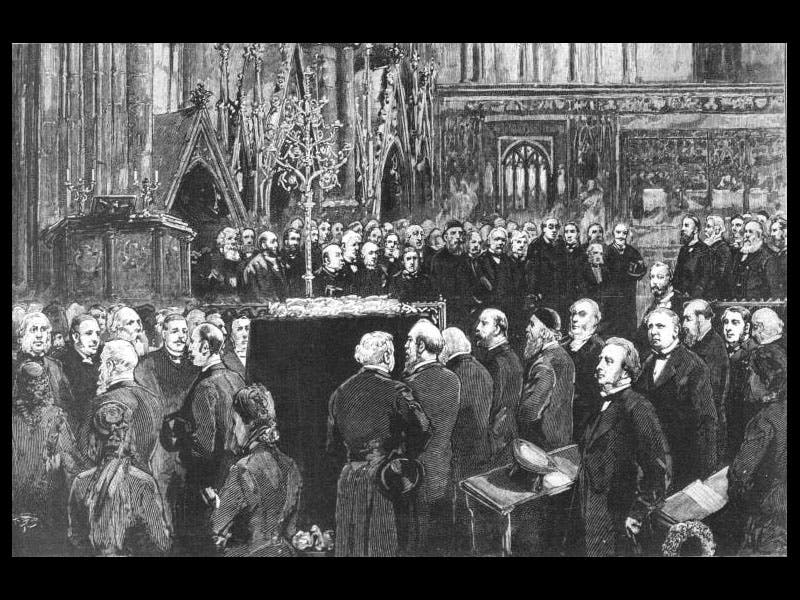
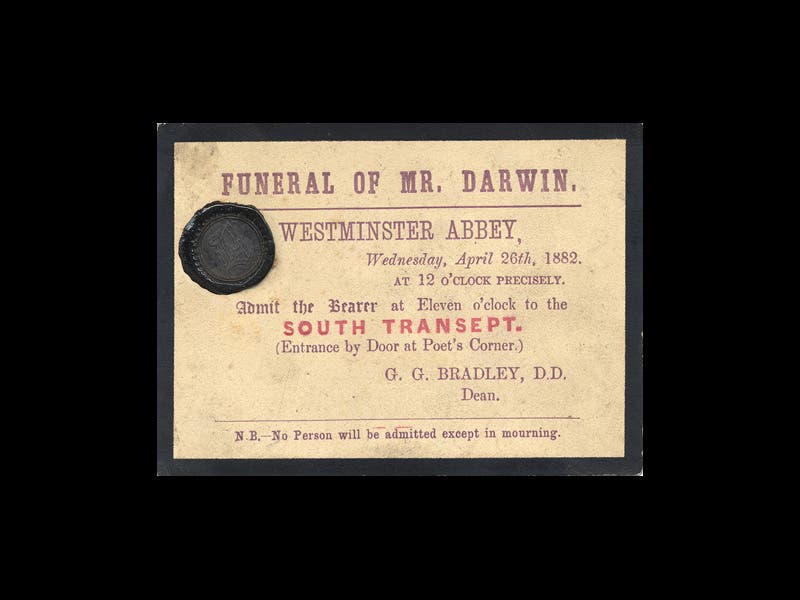

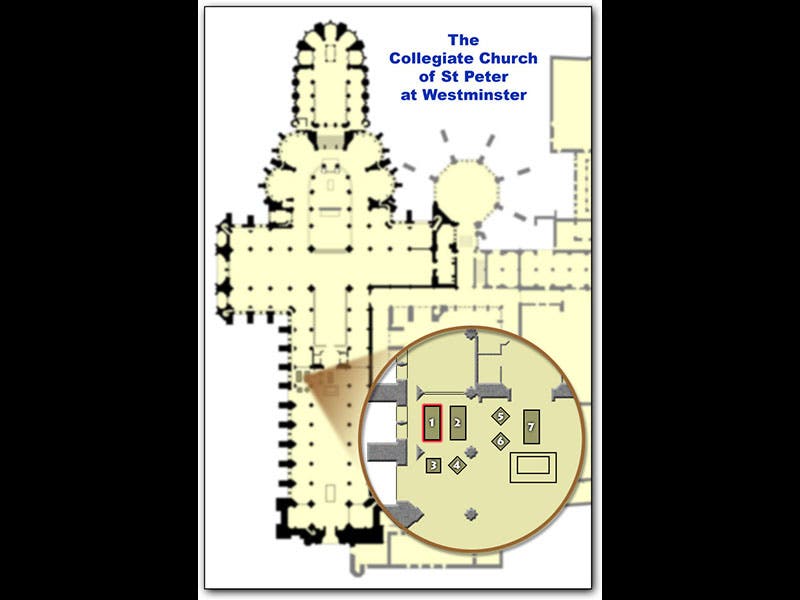
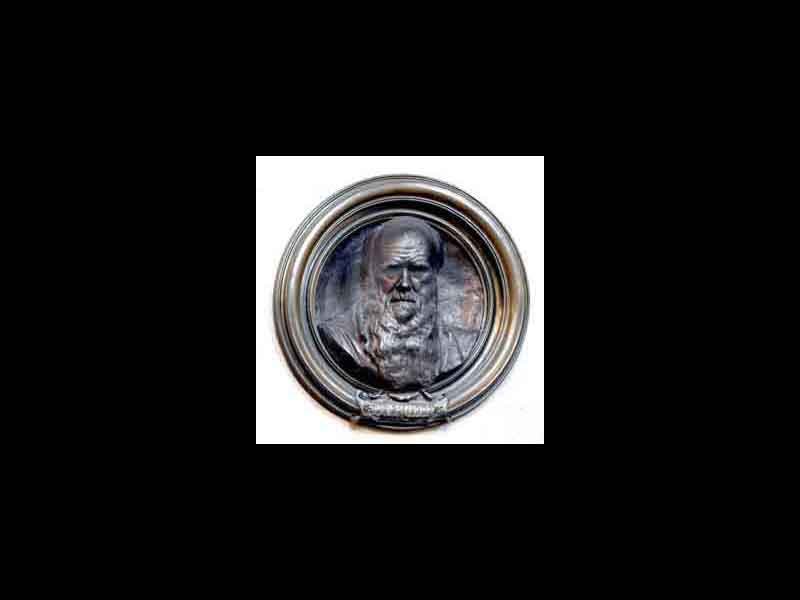




![Using an astrolabe to measure the depth of a well, woodcut in Elucidatio fabricae vsusq[ue] astrolabii, by Johannes Stöffler, 1513 (Linda Hall Library)](https://assets-us-01.kc-usercontent.com:443/9dd25524-761a-000d-d79f-86a5086d4774/a998eb50-55d2-4a88-ace2-a50aa5fa86e7/Stoffler%201.jpg?w=210&h=210&auto=format&fit=crop)